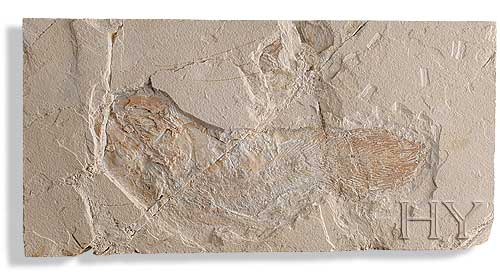In 1938, Darwinists suffered a terrible disappointment with the capture of a living coelacanth, a fish they had long depicted as so-called evidence of the transition of vertebrates from the sea to dry land. In the years that followed, some 200 coelacanths were caught. In 1987, Professor Hans Fricke of the Max Planck Institute observed these creatures in their natural habitat by descending to a depth of 200 meters off the East African Comoro Islands, in a submarine named Geo. He observed that their bony fins had no functional link to the limbs that permit walking in tetrapods (four-footed animals).The April 2003 issue of Focus magazine reported the findings from this research: "The flexible fins had no similar functions to those in four-footed land vertebrates. These allowed the creature to swim head-down and in all directions, even backwards." (Focus, April 2003)With its structures that have remained unchanged for 400 million years, the coelacanth places evolutionists in a highly difficult position. Bear in mind, too, that continental shifts have taken place over those 400 million years, during which the coelacanth never changed at all.It can be seen that evolutionists are in an utterly hopeless position. Moreover, the coelacanth exhibits a profound gulf between the marine and terrestrial life forms, between which the theory of evolution presumes a transitional link.
TEMAS
CavourVaticanoSocialismoIluminismoRevolución FrancesaConversoSabateanoJacobinismoMedios de Comunicación MasónicosZionismo PolíticoJove TurcoComité de Unión y ProgresoAbdulhamidAntinaziOrganización Zionista MundialLas Leyes de NurembergMussoliniPrimer Guerra MundialAdolf EichmannGoyimLa Dinastía RothschildGrupos de PresiónConsejo de Relaciones ExterioresRockefellerGuerra FríaStalinRevolución de OctubreUnión SoviéticaBilderbergVietnamComité de Asuntos Públicos Estados Unidos IsraelPresiónjustoSudesteGreciaNuevo Orden MundialMar Rojogeopolíticaveteranoimpuestocostumbres2023antílopetoroConcejo Islámico de EurasiaPremio NóbelHospitalInstitución de Seguridad SocialAli BabacanTurgut OzalasesinatoGaffar OkkanMuhsin YaziciogluNebolusa RosettaAstronomíaRosaSermón de DamascoArma NuclearIyad AllawiNautilussubmarinocélula de buceoAli BardakogluTelevisiónTelevoleCanakkale


